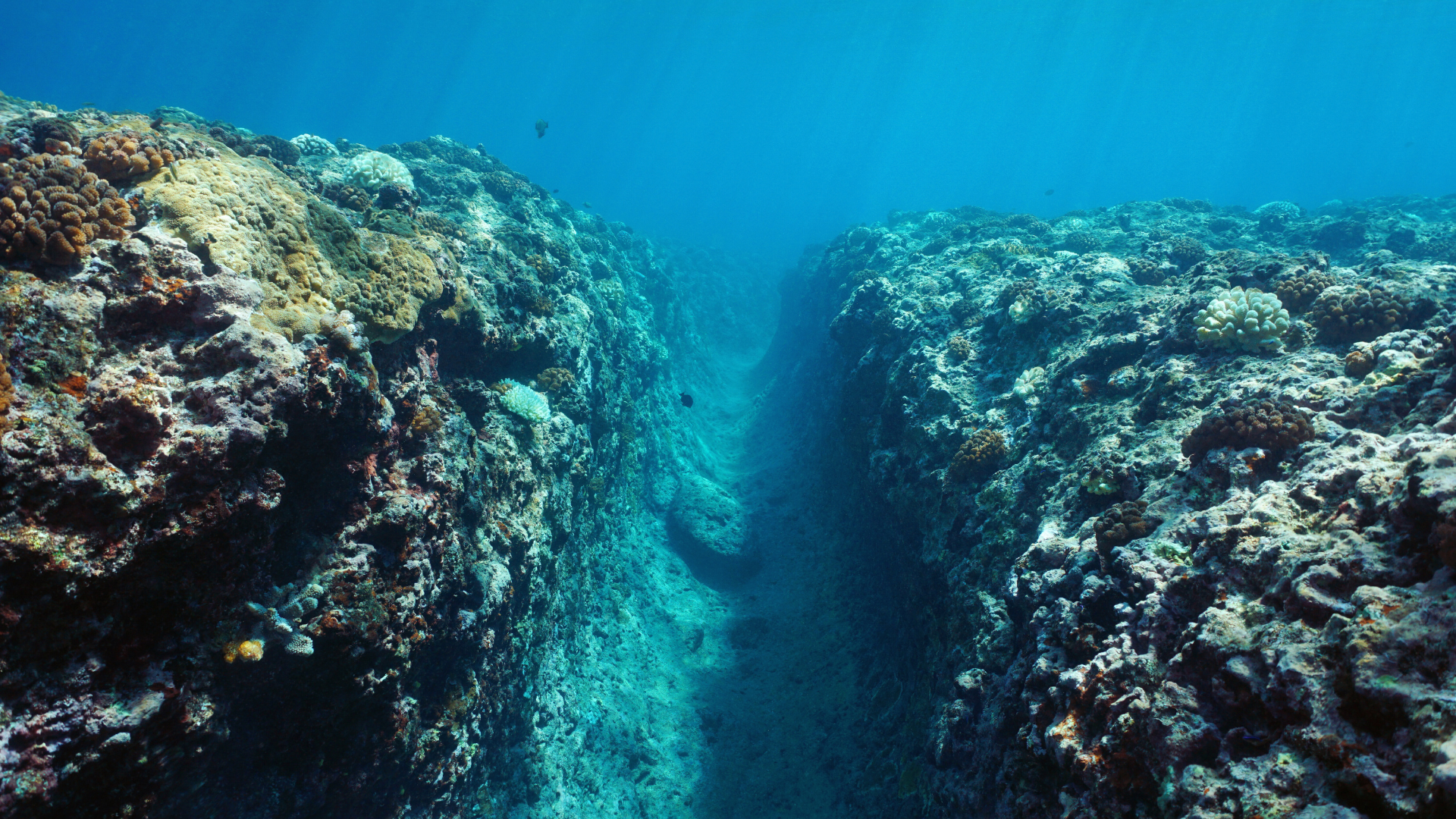
Ocean acidification is a significant environmental issue resulting from increased carbon dioxide (CO2) emissions. As the atmosphere absorbs more CO2, a substantial portion dissolves in ocean waters, leading to chemical reactions that reduce the pH levels of the oceans. This change in acidity has serious implications for marine ecosystems, particularly for organisms such as corals, shellfish, and certain plankton, which rely on stable pH levels to thrive.
The impact of ocean acidification extends beyond marine life; it also poses risks to the broader food web and human communities that depend on these ecosystems for their livelihoods. As fish populations decline and shellfish become harder to cultivate, the economic and nutritional ramifications could be profound. The intricate connection between ocean acidification, climate change, and carbon emissions underscores the urgency of addressing this phenomenon.
Understanding ocean acidification is crucial for fostering awareness and driving action to mitigate its effects. Scientists and policymakers are working collaboratively to explore solutions that could help protect marine biodiversity and sustain the livelihoods tied to healthy oceans.
The Science of Ocean Acidification
Ocean acidification is a complex process involving changes in the chemistry of seawater due to increased carbon dioxide (CO₂) levels. This section explores the intricate relationships between seawater chemistry, the role of CO₂, and the effects on calcium carbonate structures.
Understanding Seawater Chemistry
Seawater is a solution composed primarily of water, salts, and dissolved gases. The pH of seawater typically ranges from 7.5 to 8.5, indicating a slightly alkaline environment. When carbon dioxide is absorbed by ocean waters, it reacts with water to form carbonic acid, which subsequently dissociates into bicarbonate and hydrogen ions.
As hydrogen ions accumulate, they lower the pH, making the water more acidic. This alteration in seawater chemistry can impact marine life, particularly organisms that depend on stable pH levels for physiological processes. Monitoring pH levels is essential for understanding the progression of acidification in various marine habitats.
Role of Carbon Dioxide in Acidity
Carbon dioxide is a significant player in ocean acidification. Natural processes release CO₂ into the atmosphere, but human activities, primarily fossil fuel combustion, have drastically increased its concentration. Approximately one-third of emitted CO₂ is absorbed by oceans.
This absorption process converts CO₂ into carbonic acid, which contributes to increased acidity. The enhanced acidity leads to a change in the balance of carbon species in seawater, shifting the equilibrium towards more dissolved CO₂ and less stable carbonate ions. This change can disrupt marine ecosystems and alter the behaviour of marine organisms, from phytoplankton to fish.
Impacts on Calcium Carbonate Structures
Calcium carbonate is a crucial component for many marine organisms, such as corals, molluscs, and some phytoplankton. These organisms rely on calcium carbonate for constructing shells and skeletons. However, as seawater becomes more acidic, the availability of carbonate ions diminishes, which affects their ability to form calcium carbonate.
When the pH decreases, these organisms face difficulties in maintaining their structural integrity. This can lead to weaker shells and less resilient coral reefs, impacting biodiversity and marine ecosystems. The decline of these structures can have far-reaching consequences for habitats that depend on them, highlighting the importance of addressing ocean acidification.
Effects on Marine Ecosystems and Biodiversity
Ocean acidification significantly impacts marine ecosystems and their biodiversity. The alterations in pH levels affect a wide range of species, disrupt food webs, and threaten entire marine habitats.
Consequences for Marine Life
Marine organisms are highly sensitive to changes in pH. Species such as fish, crabs, and pteropods experience impaired sensory functions, affecting their ability to survive and reproduce. For example, fish that rely on olfactory cues for predator avoidance may struggle in more acidic waters.
These changes can ripple through the food chain, impacting not only individual species but also their predators and prey. As certain species decline, others may thrive or shift in population dynamics, leading to a less stable marine ecosystem.
Disruption of Coral Reefs
Coral reefs are particularly vulnerable to ocean acidification. Corals rely on calcium carbonate to build their structures. Lower pH levels hinder this process, making it more challenging for corals to grow.
The loss of coral habitats affects countless marine species that depend on reefs for shelter and food. This can reduce biodiversity and disrupt the delicate balance of reef ecosystems, impacting fisheries that rely on these habitats for spawning and growth.
Threats to Shellfish and Fisheries
Shellfish, including clams and oysters, face critical threats from acidified waters. These organisms depend on calcium carbonate to form their shells. Insufficient calcium carbonate availability leads to thinner, weaker shells, increasing mortality rates.
Fisheries are also at risk. Many economically important fish, like those that rely on shellfish as a food source, may decline in population. The combined effect of species loss can disrupt local economies dependent on fishing activities, leading to broader socio-economic implications for coastal communities.
Socioeconomic Implications
Ocean acidification poses significant challenges to marine resources and coastal communities, affecting both food security and the economy. Key areas of concern include the sustainability of global fisheries and the economic repercussions for regions reliant on these resources.
Impact on Global Fisheries and Food Security
Ocean acidification harms marine ecosystems, particularly shellfish and coral reefs, which are critical for fisheries. Species like oysters, clams, and crabs struggle to form shells, leading to reduced populations.
In regions such as Alaska and American Samoa, this decline directly impacts local fisheries. These areas depend on healthy marine life for both subsistence and commercial fishing.
As fish stocks dwindle, food security is threatened. Many communities rely on seafood as a primary protein source. The loss of marine biodiversity undermines local diets and cultures, exacerbating social inequalities and food scarcity.
Economic Costs to Coastal Communities
Coastal economies face rising costs due to ocean acidification. Fishing industries may incur higher expenses for adaptation and sustainability efforts.
Communities in Alaska, reliant on fishing jobs, could see declining incomes as fish stocks diminish. Jobs loss can ripple through the local economy, affecting related sectors such as tourism and commerce.
In American Samoa, a significant portion of income is derived from fisheries. As these resources deplete, local businesses may struggle to survive. Economic downturns can lead to increased unemployment and reduced public services, creating further hardships for residents.
These socioeconomic implications highlight the urgent need for effective management and mitigation strategies to support affected communities.
Historical Context and Future Projections
Understanding the progression of ocean acidification involves examining its historical roots and the anticipated future shifts in ocean chemistry. Increased atmospheric carbon dioxide from human activities significantly impacts marine ecosystems.
Industrial Revolution to Present Day
The Industrial Revolution marked a significant turning point, initiating extensive fossil fuel combustion. This led to a rapid increase in atmospheric carbon dioxide levels. Before the Industrial Revolution, atmospheric CO2 was approximately 280 parts per million (ppm). By 2021, it reached over 410 ppm, largely due to greenhouse gas emissions.
The oceans absorb about 30% of atmospheric CO2, resulting in the chemical reaction that forms carbonic acid. This process lowers the pH of ocean water, causing acidification. The average pH of ocean water has declined from around 8.2 to approximately 8.1 since pre-industrial times. This shift threatens marine life, particularly organisms with calcium carbonate shells, such as corals and shellfish.
Predicting Long-Term Changes in Ocean Chemistry
Future projections indicate worrying trends for ocean chemistry, depending on human actions. If current fossil fuel consumption patterns continue, models suggest that global ocean pH could drop by 0.3 to 0.4 units by 2100.
Such significant changes can alter marine habitats and affect biodiversity, particularly in vulnerable regions like coral reefs. Risk assessments indicate repercussions for fish stocks, impacting food security and economies reliant on marine resources. Understanding these long-term changes is crucial for conservation efforts and policy implementation. The interplay between ocean acidification and climate change poses a substantial challenge that requires immediate attention and action.
